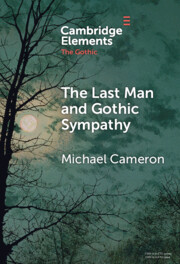Element contents
The Last Man and Gothic Sympathy
Published online by Cambridge University Press: 22 February 2024
Summary
- Type
- Element
- Information
- Series: Elements in the GothicOnline ISBN: 9781009357500Publisher: Cambridge University PressPrint publication: 28 March 2024
Bibliography
- 2
- Cited by



